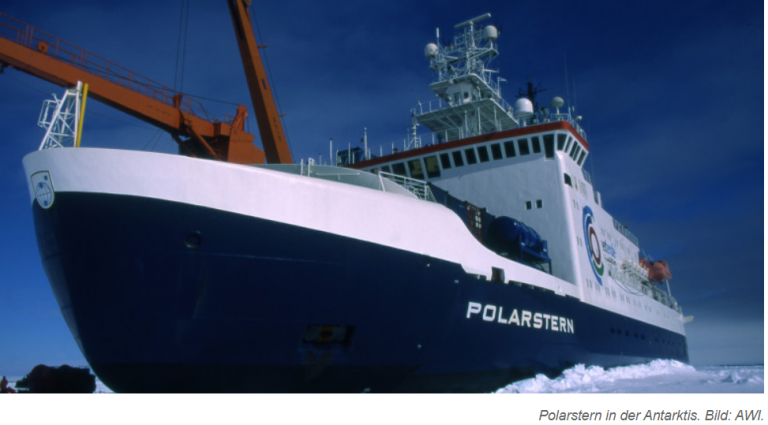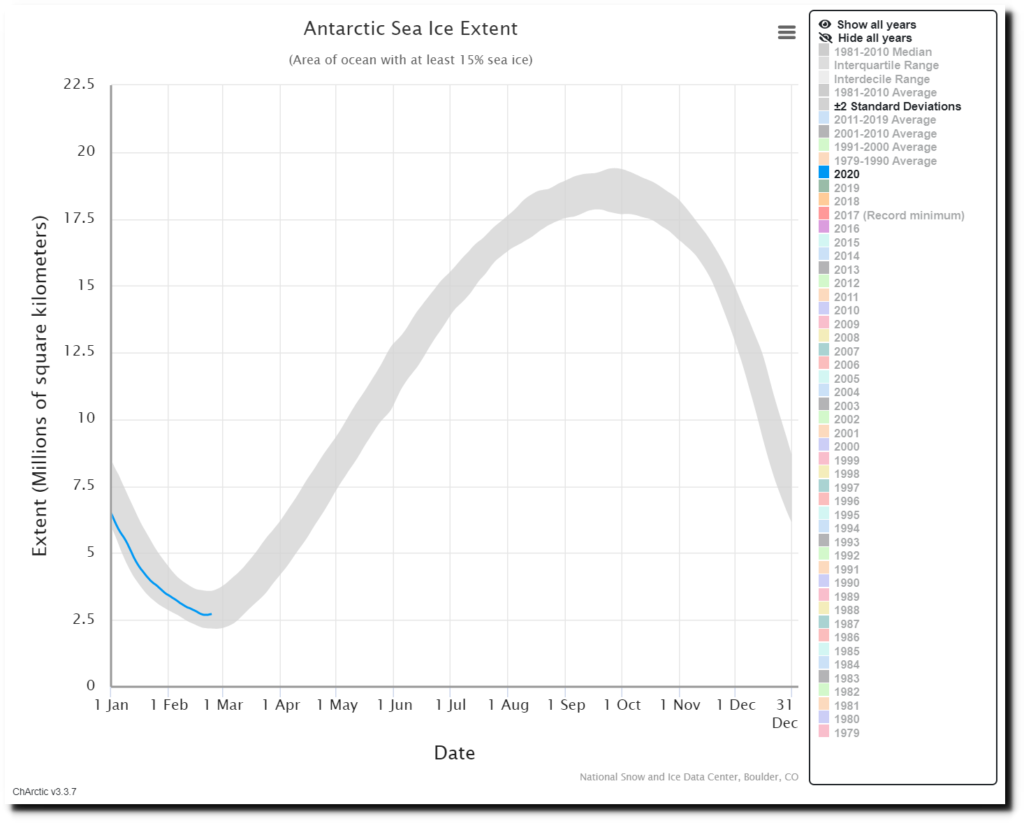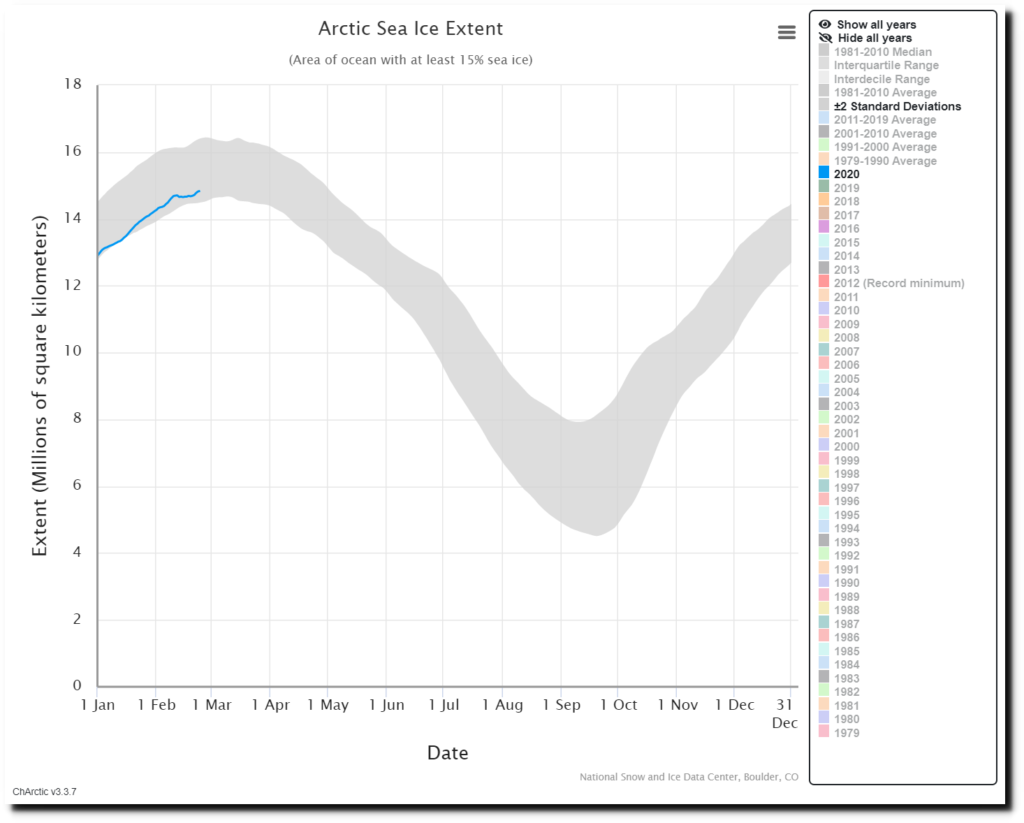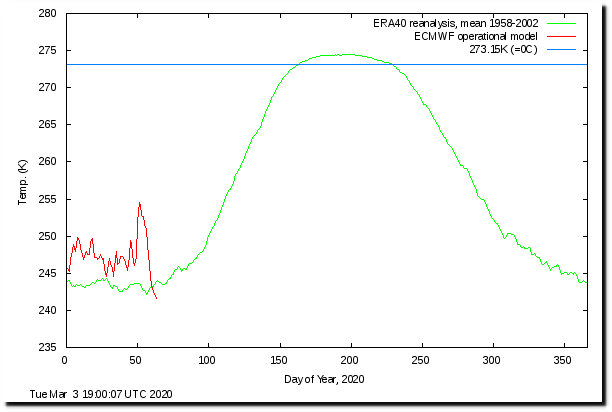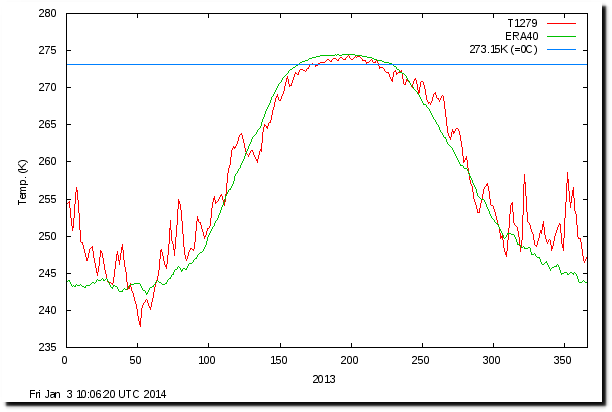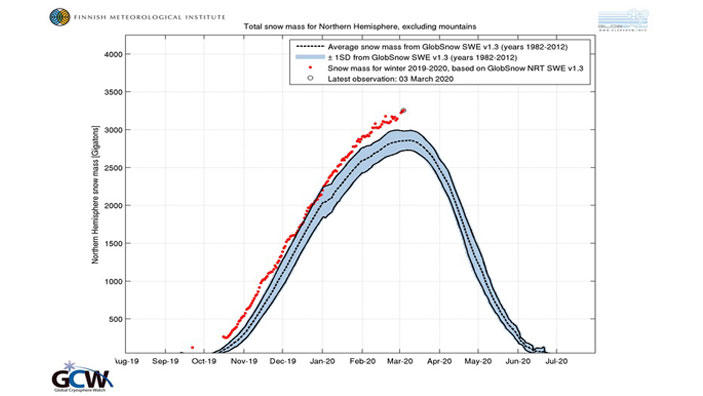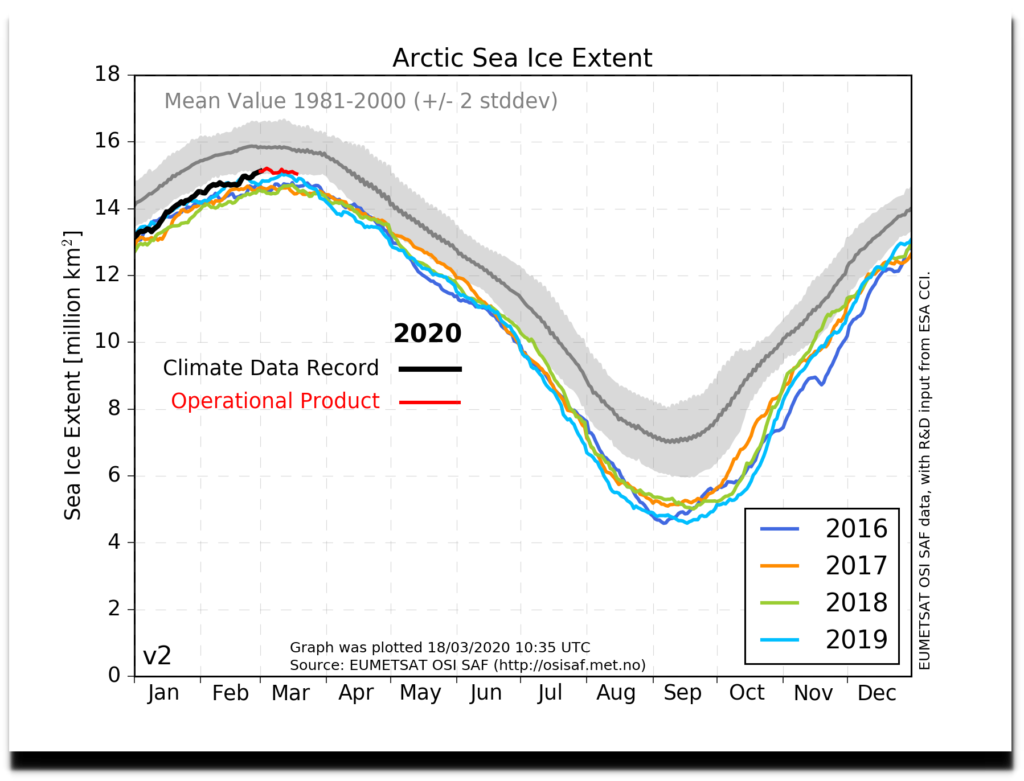Jan 2020: Coldest ever day in Greenland -65C comes, goes, no one notices
The coldest ever day recorded in Greenland stands at -63.3 C (minus 81 F). But on January 2nd in 2020, after Greenland suffered a century of global warming, the thermometer at Summit Camp sunk to at least -64.9C. I say,
at least, because it may have been even colder. Sharp eyes of Cap Allon at
Electroverse saw it hit minus 66C. Ryan Maue also saw it and predicted there would be cold as the Arctic Oscillation broke down.

4:13 AM · Jan 4, 2020
I sought confirmation at the time (among the Bushfire days in Australia). I looked for any official tweet even, but couldn’t find any. How’s that work — a new all time record for a whole continent for any month of the year, and no one who was paid to care about these things even writes a paragraph?
Good for Paul Homewood, who wrote to the DMI (Danish Met Institute) and has now confirmed that the NOAA GeoSummit records showed it got down to -64.9 C, an all time record.
John Cappelen: I have now had the opportunity to go through the American observations from NOAA GeoSummit from January 2, 2020 . I have at NOAA’s wab-site found January 2020 ftp data up to January 15, 2020.
January 2, 2020 was a cold day at SUMMIT and 23:13 utc the temperature had a minimum -64,9C…the same temperature was registered 23:15 and also 23:16 utc….data looks all right…
 …
…
That’s nearly three degrees cooler than the record for January at Summit Camp:
 …
…
Paul Homewood writes that it’s a record one way or the other:
Although the DMI equipment has now been closed, it was at the same location as the Geo Summit, so readings should be comparable.
Quite clearly then, a new record low has been set for both Summit and Greenland. Whether it is –64.9C, as stated by John Cappelen, or the graphic reading from Electroverse remains a mystery.
Nevertheless, we await the new record to be officially declared by NOAA, and reported in the world’s press!
Compare this to the rush to declare the
highest ever June temperature in Greenland last year which was announced in the newspapers but turned out to be wrong and was quietly corrected a week later. From Anthony Watts at WUWT August 2019
“Shoot out the headlines first, ask questions later.”
Danish climate body wrongly reported Greenland heat record
The Danish Meteorological Institute, which has a key role in monitoring Greenland’s climate, last week reported a shocking August temperature of between 2.7C and 4.7C at the Summit weather station, which is located 3,202m above sea level at the the centre of the Greenland ice sheet, generating a spate of global headlines.
But on Wednesday it posted a tweet saying that a closer look had shown that monitoring equipment had been giving erroneous results.
“Was there record-level warmth on the inland ice on Friday?” it said. “No! A quality check has confirmed out suspicion that the measurement was too high.”. . . .




